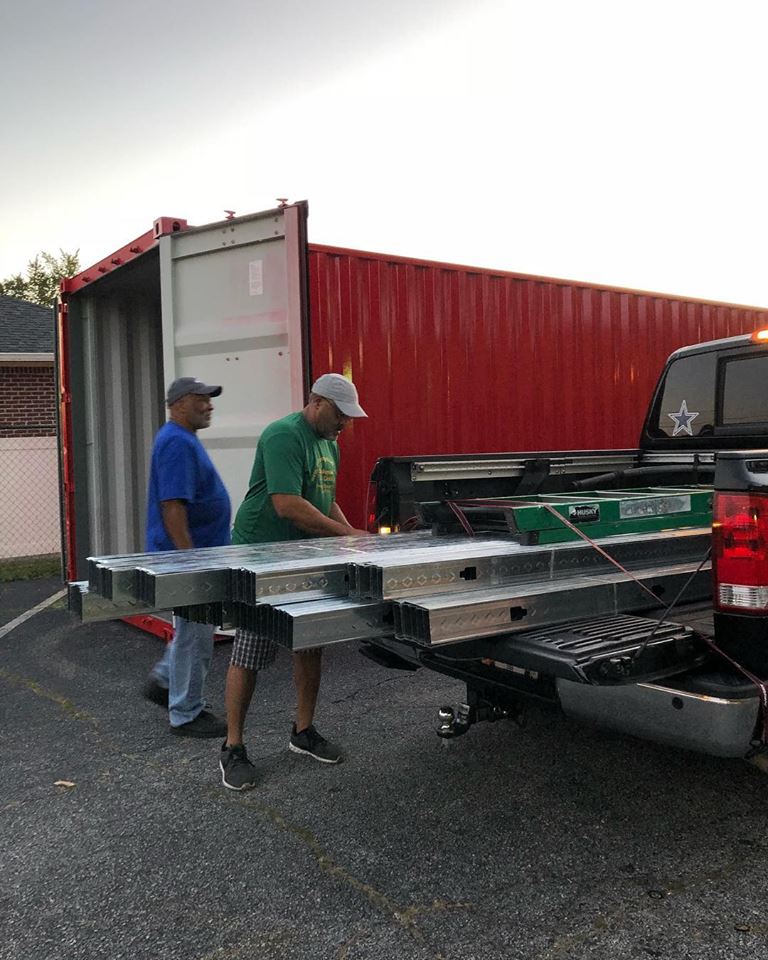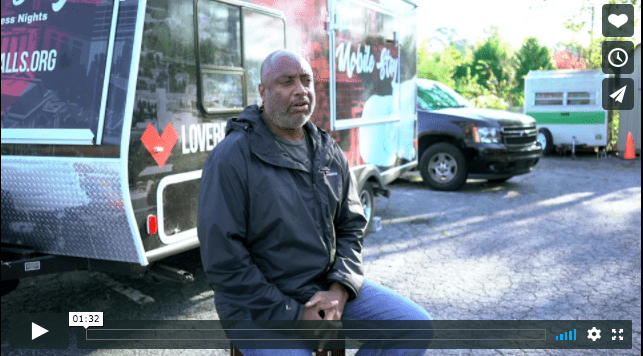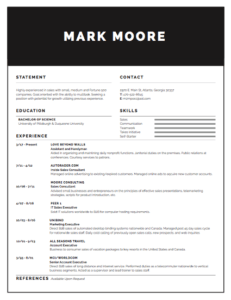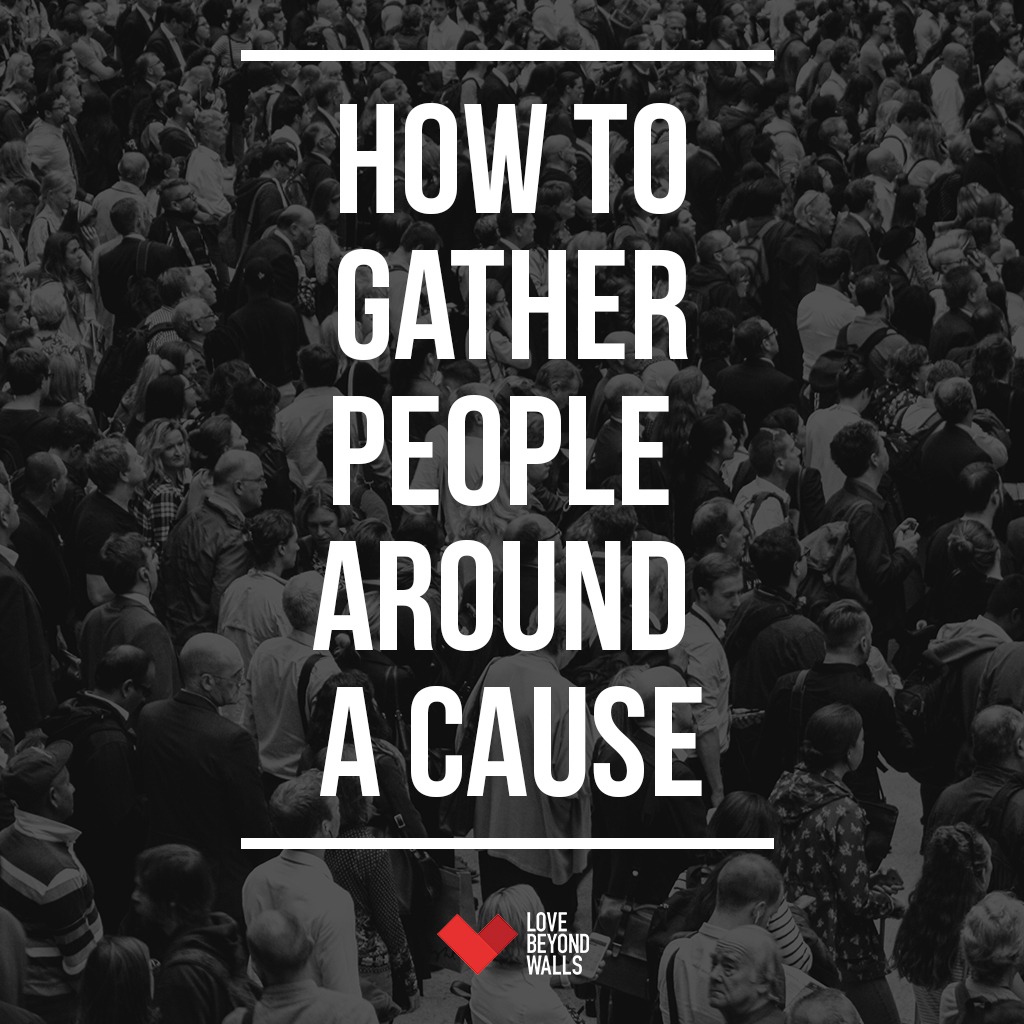
In leading a movement of doers, we want to equip you in how to create your own movement or how to bring awareness to an issue close to you.
The world changes and problems are solved through communities of people coming together to commit to the change. Love Beyond Walls would not have any impact if it weren’t for our volunteers, followers, partners, and everyone who engages with our story and mission.
The same goes for every cause. If you’d like to gather people around your idea, solution, or mission, here are some first steps to follow.
1. Identify With It
The cause needs to be something that you personally identify with it. It ties into your story. That doesn’t mean you have had to go through it but it has had to have an impact on you.
For example: If you overcame an illness, you might find joy in working with people who are also overcoming an illness. Or, you could have had a friend that was touched by this, and you were affected as a result.
Whatever the cause, it should burn in your heart. It’s not a hobby or trendy topic but something that motivates you to get out of bed in the morning.
2. Get Involved
In order to make an impact towards the cause you’re fighting for, you’ll need to become familiar and knowledgeable about it.
Maybe there is an organization or group already doing something in this area you could learn from.
Take time to volunteer, do research, and hear speakers. Engage with the community that is already working towards making a change.
3. Listen
In developing your own idea, never bring a solution or prognosis to a community without first hearing the symptoms from the people you plan to service.
You wouldn’t have a doctor who prescribes medicine without listening to the symptoms, the same goes for this. Out of the need comes the prognosis.
If you are going to be a social scientist, you can never meet the needs of the people you’ve never met. Additionally, you’ll find out how to tailor your idea to meet the need you found.
4. Get Active
Once you have listened and become knowledgeable, this should provoke action.
You will begin to give your time to it. Create a rhythm in your life where this time is ongoing. Most people normally ask how to do a one-off event but if you are really committed to cause, you need to make service a lifestyle and consistent rhythm in your life.
How often are you going to make sure people have blankets? What days? It’s easier to invite others into the cause when you’re consistent in your idea and service.
You’re applying the knowledge, serving the burden, and actually figuring out the need.
5. Invite others
Start with those who are closest to you. People will believe in you before they believe in the mission or cause you are fighting for. You will become the bridge needed to connect people to your cause.
Try to gather them in a social setting. For example: If your idea is to provide blankets for the homeless community, then you need to invite 5 or 6 friends around an actual activity.
Instead of just collecting blankets and dropping them off, have the people serving with you do something around the blankets. Tell them, “we’re going to write notes.” Or, create tasks that educates those who are donating the blankets. This will help your audience understand why they are needed more than just one time, and must give a part of themselves to the cause.
6. Distribution
Begin to match the people who are giving with the people who have the need.
Help forge relationships between people who have resources relationships and time and those who need them.
Storytelling
While you begin to bring people around a cause, the leading factor should be storytelling. Everything you do should fall under this umbrella.
The need may be blankets, but what story inspired you to want to start collecting blankets? Ask yourself questions like these. This is what will bring people along the journey.
There are 4 P’s to tell a great story: person, plot, place, purpose.
Instead of, “we need blankets for the homeless!” Try and tell a story like this:
“Yesterday, I met John. He sleeps outside and it’s 15 degrees. He was behind a building downtown trying to take cover from the wind. We need to ensure that if he is sleeping behind this building he at least has these blankets.”
We always try to tell stories in this way because it’s indirect asking. It’s a way for people to get involved without directly telling them what to do.
Leave enough space for people to find out that they’re the extra character in the story. Once they figure that out, they’ll come through in even bigger ways than you might have initially imagined.
We try to create “low hanging fruit” where anyone can see themselves as the hero of the story because the level of entry is so low. Don’t exclude people by asking for a blanket factory or people that can only donate $10,000.
This way anyone can get involved because the premise is not based on material but rather involvement.
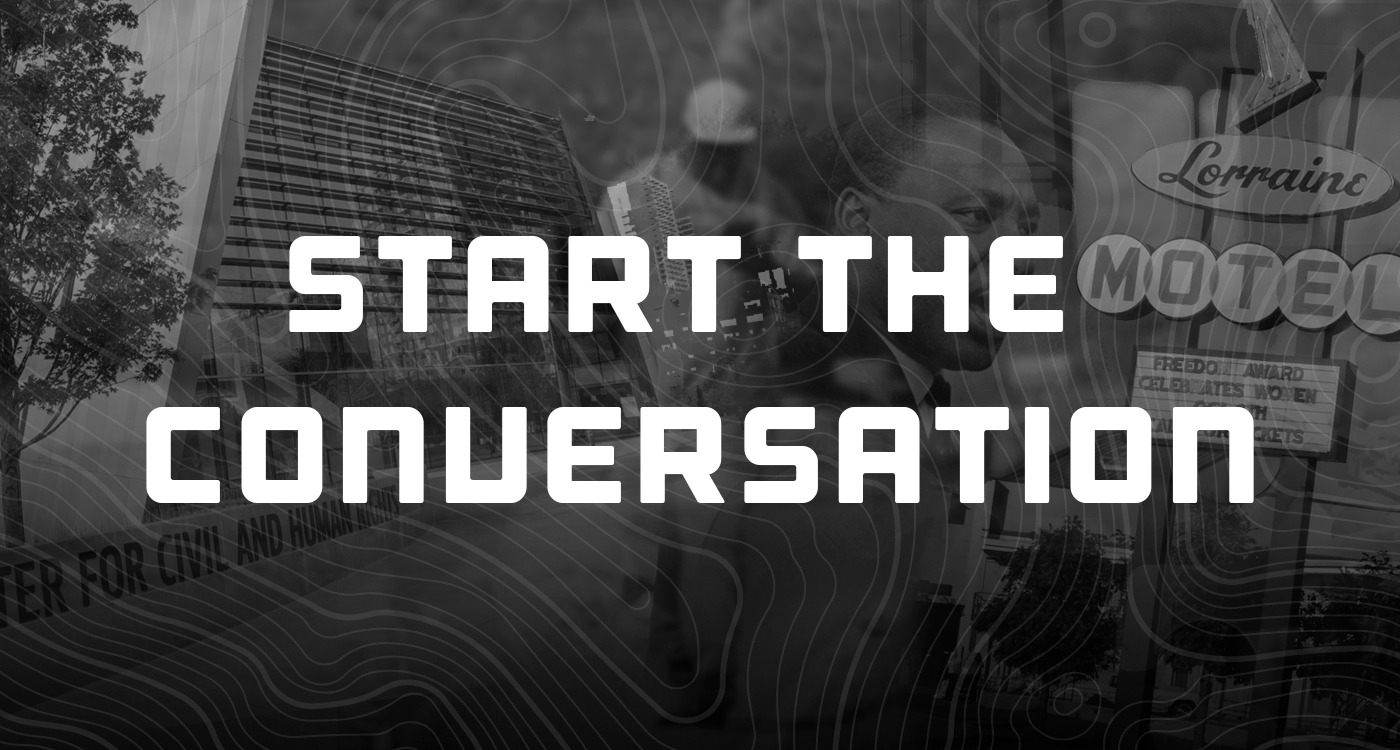
Overview:
Here are some basic facts on poverty in America:
- In 2015 there were 43.1 million people in poverty. (Proctor 2016, p. 12-14)
- The 2015 poverty rate for Blacks was 24., for Hispanics 21.4, and for Asians 11.4 percent. For non-Hispanic whites, the poverty rate was 9.1 percent (Proctor 2016, p. 12-4).
- The poverty rate for children under 18 was 19.7 percent in 2015, and the number of children in poverty was 14.5 million. Children represented 23.1 percent of the total population and 33.6 percent of people in poverty (Proctor 2016, p. 14).
- 19.4 million Americans live in extreme poverty. This means their family’s cash income is less than half of the poverty line or about $10,000 a year for a family of four. They represented 6.1 percent of all people and 45.1 percent of those in poverty.
Terms to know:
Wealth Inequality:
Income inequality refers to the extent to which income is distributed in an uneven manner among a population. In the United States, income inequality, or the gap between the rich and everyone else, has been growing markedly, by every major statistical measure, for 30+ years.
Wage Gap:
The difference in rates of pay between two groups of people. For example, the difference in pay based on gender and race.
Institutional Oppression:
The systematic mistreatment of people within a social identity group supported and enforced by the society and its institutions, solely based on the person’s membership in the social identity group. For example, schools in a lower-income neighborhood have fewer funds, more students, and as a result, receive a poorer education.
Redlining:
The legal process that lasted from 1934 until 1968 that refused to back loans to black people or even other people who lived near black people. Redlining destroyed the possibility of investment wherever black people lived.
(Read this article for more info on redlining.)
Hurdles to Overcome:
- Question: Do you believe that you have contributed to systemic racism?
Discuss your answers and read the following idea as well as watch the video.
Individualized Oppression:
This is the idea that because you did not own a slave, you do not contribute to oppression or racism. In fact, if you most likely have benefited from a system that oppressed a group and race to boost the privileged.
(Watch this video with Soong-Chan Rah on this idea.) - Question: Have you benefited from a system that has oppressed others?
- Question: What is a healthy way to respond to racism?
Discuss with a group and read the following idea:
“Color-Blindness”:
A popular response to racism became the idea of “color-blindness” where some claimed not to see color, but just people. While this concept probably came from good intentions, it perpetuates misunderstanding and racism further. “Color-blindness” strips minorities of their individual culture and assumes that everyone has had the same experience. It pushes aside the critically important narrative of oppression for the minority when in fact this narrative is vital to the understanding and improvement of the systemic oppression.
(Read this article for more info on this topic.)
Dream:
What does it look like for a society to care for the poor and eliminate systemic oppression?
A large movement behind this campaign is reconciliation. In light of that, who could you start a conversation with that might believe or think differently than you?
Brainstorm:
An Awareness Campaign:
Create a public awareness campaign based on an issue you discussed.
The campaign may include posters, flyers, banners, etc. that would raise awareness around the world. What would it be? Why?
Final Questions:
What are some of the needs of your own community?
What are conversations you can start with your community?
When is the time to start making an impact?
To learn more about our campaign, please visit lovebeyondwalls.org/map18
Want to download this Conversation Starter as a PDF? Click here.
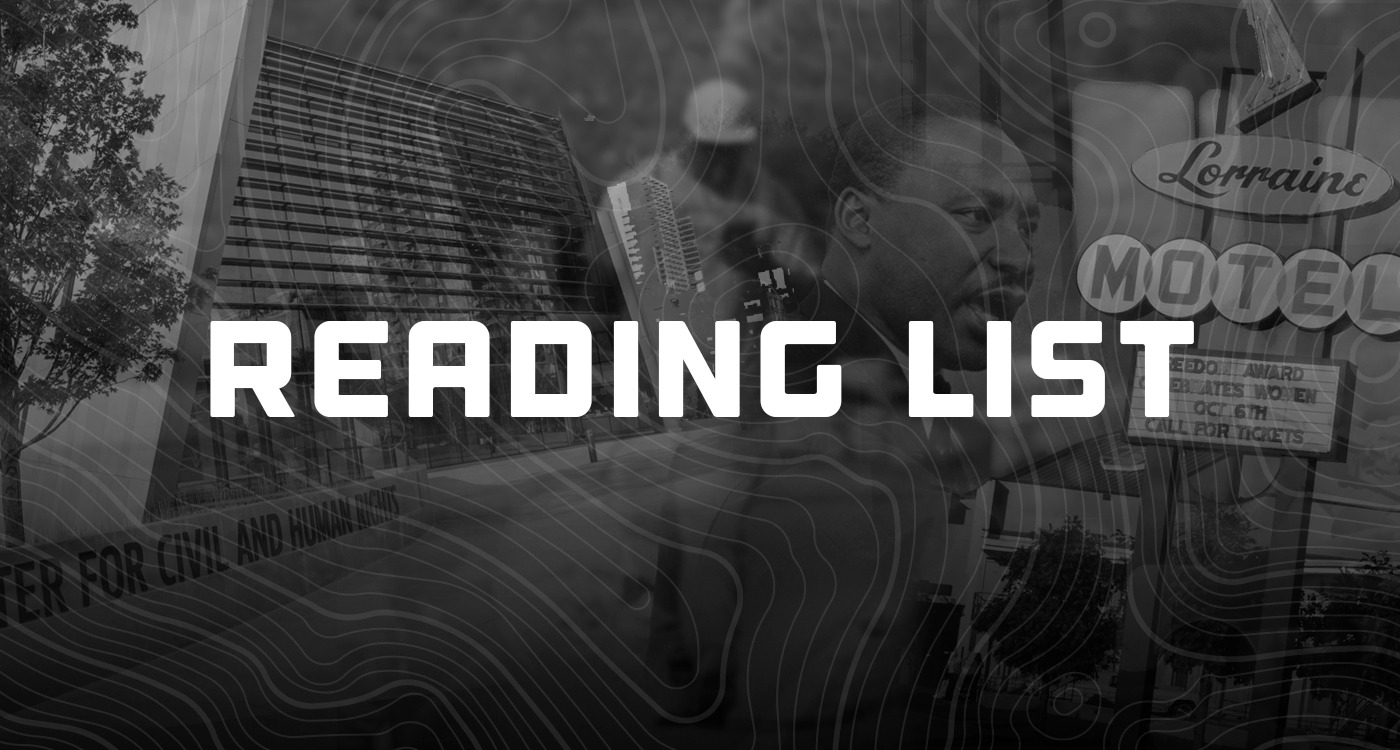
Looking to learn more about the topics we’re creating awareness for? Here are some of our most recommended books on racial division, poverty, and Christianity and poverty.
RACIAL DIVISION:
The New Jim Crow: Mass Incarceration in the Age of Colorblindness by Michelle Alexander
Is God a White Racist?: A Preamble to Black Theology by William R. Jones
White Rage: The Unspoken Truth of Our Racial Divide by Carol Anderson PHD
Embrace by Leroy Barber
Under Our Skin: Getting Real About Race. Getting Free from the Fears and Frustrations that Divide Us by Benjamin Watson and Ken Peterson
Divided by Faith: Evangelical Religion and the Problem of Race in America by Christian Smith and Michael Emerson
Between the World and Me by Ta-Nehisi Coates
Nobody: Casualties of America’s War on the Vulnerable, from Ferguson to Flint and Beyond by Marc Lamont Hill
POVERTY:
The Rich and the Rest of Us: A Poverty Manifesto by Travis Smiley and Cornell West
The Impossible Will Take a Little While: A Citizen’s Guide to Hope in a Time of Fear by Paul Rogat Loeb
99 to 1: How Wealth Inequality Is Wrecking the World and What We Can Do About It by Chuck Collins
So Rich, So Poor: Why it’s so hard to end poverty in America by Peter Edelman
The Life You Can Save: How to Do your Part to End World Poverty by Peter Singer
There Are No Children Here: The Story of Two Boys Growing Up in the Other America by Alex Kotlowitz
Amazing Grace: The Lives of Children and the Conscience of a Nation by Jonathan Kozol
The Working Poor: Invisible in America by David K Shipler
The Other Wes Moore: One Name, Two Fates by Wes Moore
A Place at the Table: The Crisis of 49 Million Hungry Americans and How to Solve It by Peter Pringle
Nickel and Dimed: On (Not) Getting By in America by Barbara Ehrenreich
CHRISTIANITY AND POVERTY:
Tattoos on the Heart: The Power of Boundless Compassion by Gregory Boyle
Toxic Charity: How Churches and Charities Hurt Those They Help, And How You Can Reverse It by Robert D. Lupton
The Justice Project by Brian McLaren, Elisa Padilla, and Ashley Bunting Seeber
Make Poverty Personal: Taking the Poor as Seriously as the Bible Does by Ash Barker
How Much Is Enough: Hungering for God in an Affluent Culture by Arthur Simon
The Politics of Jesus: Rediscovering the True Revolutionary Nature of Jesus’ Teachings and How They Have Been Corrupted by Obery M Hendricks
There Shall Be No Poor Among You: Poverty in the Bible by Leslie J. Hoppe
The Upside-Down Kingdom by Donald Kraybill
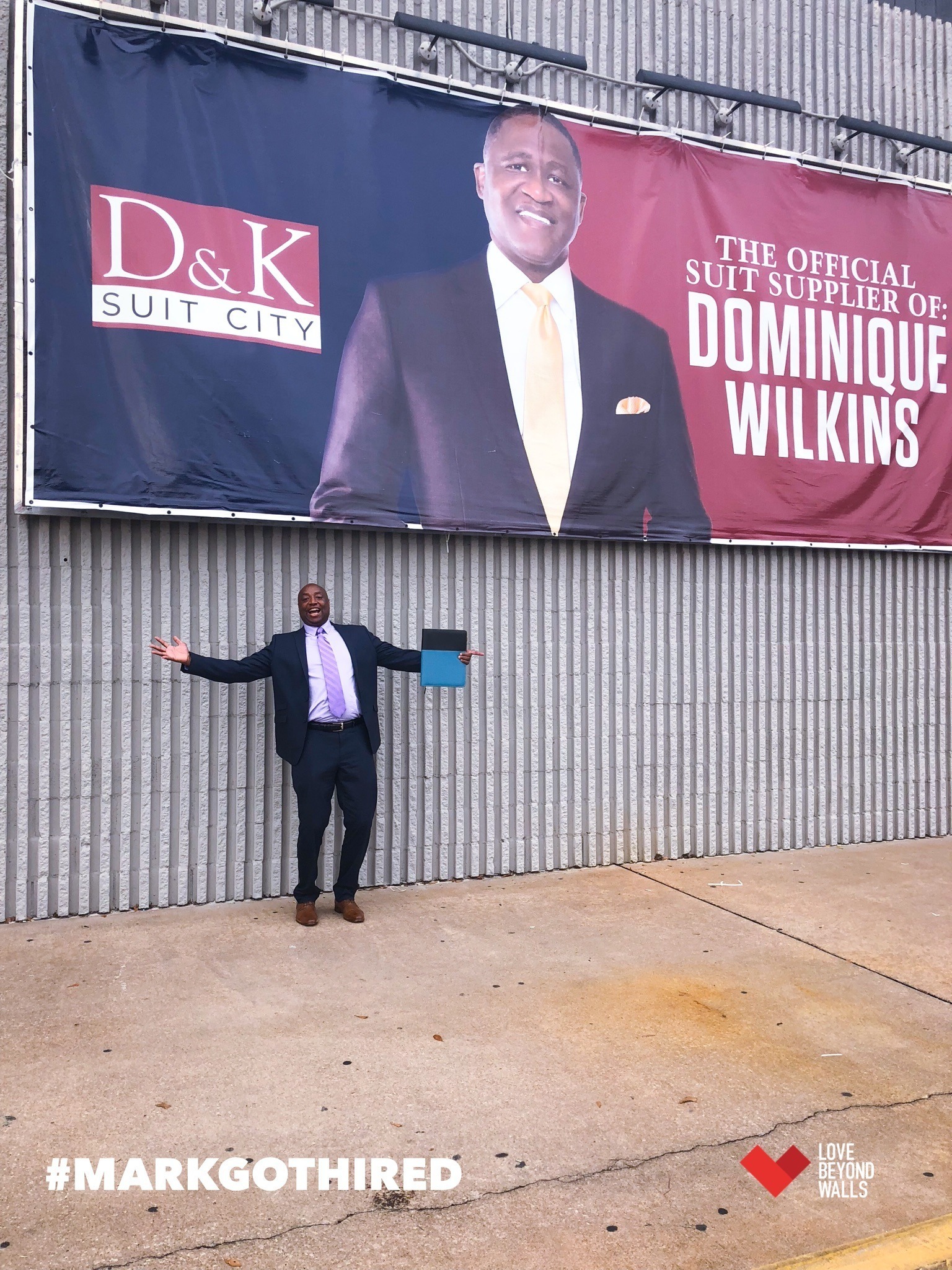
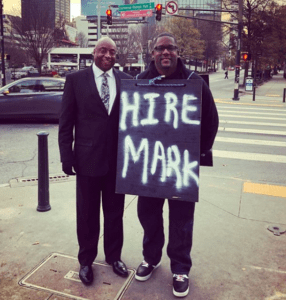
On December 13th, Terence Lester made his way to the streets with his friend Mark Moore. Terence wore a sandwich board that read, “HIRE MARK.”
Mark has been experiencing homelessness for the last four years. He encountered Terence and his nonprofit, Love Beyond Walls, a year ago while he was digging through their dumpster in search of food.
Over the last year, Love Beyond Walls has worked with Mark to help him find temporary shelter, access to food and water, clothes, and a way to begin the process to transition out of homelessness. The greatest hurdle he encountered was getting his ID card so he could apply for jobs and open a bank account.
Since launching the campaign on Wednesday, Mark has had four interviews and dozens of phone calls and emails.
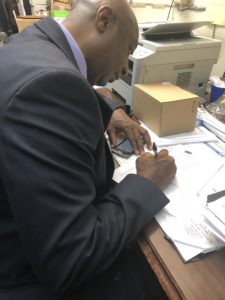
On the first day of the campaign, Mark opened his bank account, printed his resume, and took to the streets. By the end of the week, he had talked to dozens of people on the streets, was interviewed by news teams, had a laptop donated, as well as two suits from D&K.
Terence and Love Beyond Walls accomplished most of this by leveraging the power of technology and social media for good and to bring people together.
At 3 pm on Monday, December 18th, Mark had a second interview with a sales company and was offered a job.
This year for Christmas, Mark is given opportunity. He will escape homelessness, with a community behind him to support his transition.
Love Beyond Walls plans to use this process as a model to help transition more people out of homelessness.
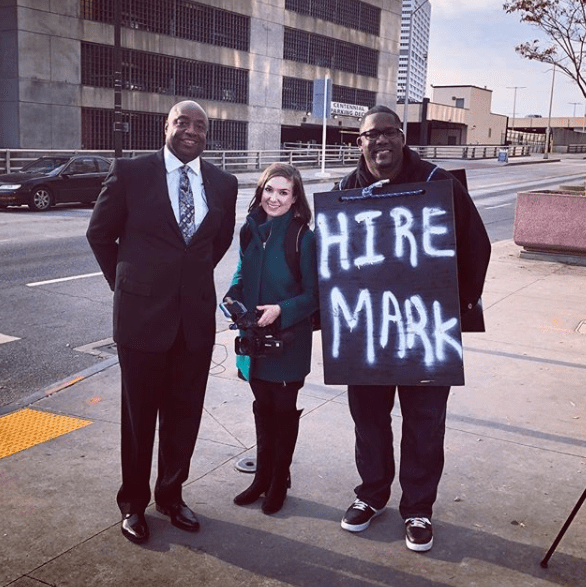
Today is day three of Love Beyond Wall’s #HIREMARK Campaign.
On day one, Mark and Terence printed his resume, Mark opened his first bank account in five years, and they hit the streets to pass out his resume.
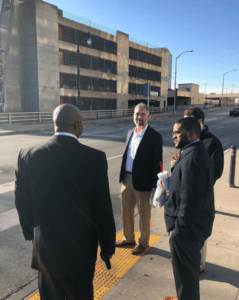
On day two, Terence and Mark stood outside the CNN center to pass out his resume, and Mark had his first job interview.
Now, on day three, Mark and Terence were interviewed by a news station this morning and will be on the six-o’clock evening news.
What’s happened in the last three days is amazing. The campaign has organically reached over 50,000 people. But this campaign has been much more than the last few days they’ve shared on social media.
For Terence and Mark, the last three days have actually been the result of an entire year of work. The year has been filled with ups and downs. Slow progress, reconnecting with lost family members and getting the right identification to take the next step forward.
Joblessness is not a problem that keeps just Mark on the streets. It keeps thousands of people living under bridges and sleeping on sidewalks every day. So many factors keep the homeless unemployed: lack of transportation, lack of childcare, no identification, low-levels of education, criminal history, little previous work experience, etc.
Love Beyond Walls hopes that this story would inspire and show people what it looks like to walk alongside one another through life’s challenges.
While Mark was sharing his story with the people he met on the streets he was told over and over again how encouraging and inspiring his transformation was.
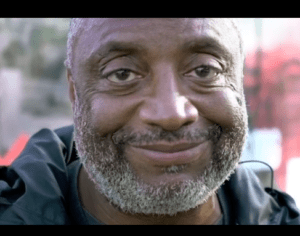 “I realize how very fortunate and lucky I am,” said one man.
“I realize how very fortunate and lucky I am,” said one man.
Another passerby said, “I’m on my way to work and wanted to complain, but I realize what a blessing this all is.”
Most of us are just one paycheck or unexpected event away from losing it all. This is not just Mark’s story, this is the struggle of us all.
Love Beyond Walls exists to serve on the frontlines to show others how to walk alongside people to restore their lives. Get involved here.
-Kellie
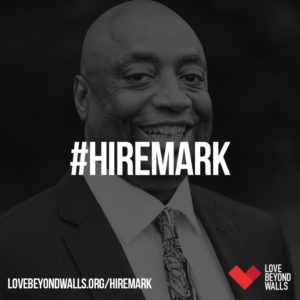
It’s been five years since Mark has had a bank account.
One of the first steps to helping Mark transition out of homelessness was to help him get a job. Simple, right? But then, how has this process taken Mark over a year to work towards?
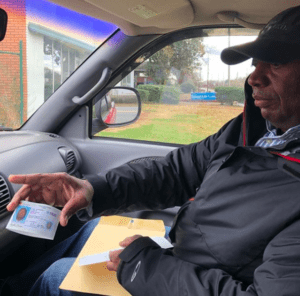
In order to get a job, Mark needed to have a bank account, a place where he could deposit his checks. In order to have a bank account, Mark needed an ID.
The process of getting Mark’s ID has been extremely challenging. He didn’t have access to important documents like his birth certificate, social security card, or proof of residence. (All things required when you get an ID.)
We worked with lawyers over the last year to help him prove his citizenship. At times it was a difficult, demoralizing journey. Can you imagine having to prove your existence and humanity?
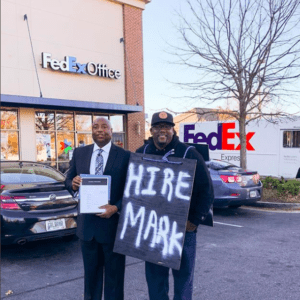
The good news is, over the last few weeks his necessary documents began to come in. Earlier this week we got his social security card in the mail and yesterday we were able to get him an ID card.
This morning we were the first people in line at the printer to get hundreds of copies of his resume printed.
Then we drove to Citizens Trust Bank to open his first bank account. He proudly presented his ID, filled out the information, and shook hands with the banker.
This is a huge first step for him to rebuild his life. Now has basic access to the resources like a bank and he’s ready to get a job!
Mark has a degree in Economics and is highly experienced in sales.
Check out his resume here and help Mark get a job!
#HIREMARK
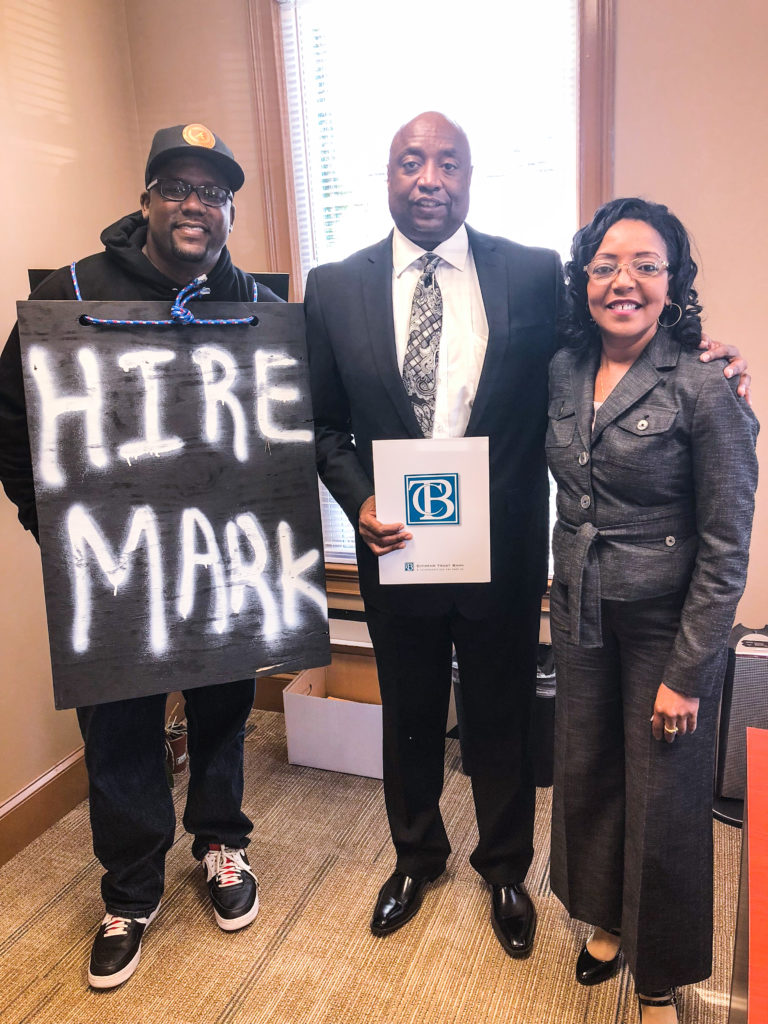
Here’s a video from the end of Day One Hire Mark Campaign:
Starting on December 13th, Terence Lester, the founder of nonprofit, Love Beyond Walls, will stand downtown on the street corner with Mark Moore. Lester will put on a wooden sandwich board that reads, “HIRE MARK,” to raise awareness for those experiencing joblessness.

Mark is a middle-aged, educated, hard-working man who is currently experiencing homelessness. Love Beyond Walls has worked with Mark for almost a year, helping him secure documents like a birth certificate, social security card, and other identification he needs to get a job and housing.
Watch Mark’s full story here:
Mark realized, “You need help to transition out of homelessness. It takes more than yourself.”
Mark will be standing next to Terence in his suit with copies of his resume. This demonstration is to challenge the community to look at the opportunities placed in front of them and what opportunities they can share with others. Terence and Mark will be standing outside on the street corner until Mark leaves for his first interview.
Love Beyond Walls believes that the greatest way to lift someone out of the pits of poverty is to give them a community, longevity in relationships, and opportunity.
You can also listen to Mark on our new podcast talk about his struggle with homelessness, why he never begged for money, and what the year-long process of getting identification was like.
Three Ways You Can Help
- Check out his resume here and help him get a job by connecting him with someone you know or giving him an interview with your company. Fill out the contact form here and write *JOB FOR MARK* in subject line to contact Mark about a job.
- We have $3,000 left in our goal to fund Mark’s part-time employment at our organization while he transitions. Please consider donating towards that here.
- Share Mark’s story! The more people that hear Mark’s story, the closer we are to getting him a job! You can share the video, the podcast, or this blog post!
LBW Team
Guess what? We have teamed up with Matt Heath Music to create original score music for our documentary “Voiceless” and we are pretty pumped about it.
In fact, we are excited to announce that “Voiceless” will become a feature length documentary and will be used to educate people about the realities of the poor, cast vision of how we plan to address poverty through our “Love Center” concept, and inspire people all across our nation to get involved in their local communities through service and sacrifice.
Below is a quick picture of us working on the project in the studio. We can’t wait to start launching screenings all around our city.
LBW Team


